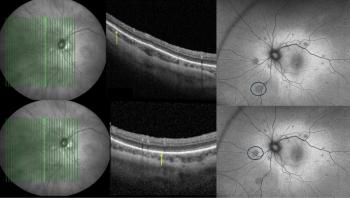
Grading allergic ocular disease
Research published online ahead of print by Graefe's Archive for Clinical and Experimental Ophthalmology, has revealed that allergic ocular diseases can be classified and clinically evaluated using a grading system.
Research published online ahead of print by Graefe's Archive for Clinical and Experimental Ophthalmology, has revealed that allergic ocular diseases can be classified and clinically evaluated using a grading system.
Eiichi Uchio and colleagues from Fukuoka University School of Medicine, Japan created a number of criteria for classifying and clinically evaluating the severity of allergic ocular diseases. They then evaluated the effectiveness of the criteria in the diagnosis of 1,079 patients.
The researchers diagnosed and classified allergic conjunctivitis, atopic keratoconjunctivitis and vernal keratoconjunctivitis based on local and systemic clinical findings. Ten objective conjunctival, limbal and corneal lesion findings were graded on a four-point scale. The total score was used as the clinical score, with a highest value of 30.
Of the 1,079 subjects, 876 (81.2%) were diagnosed with seasonal allergic conjunctivitis, 115 (10.7%) with perennial allergic conjunctivitis, 47 (4.4%) with atopic keratoconjunctivitis and 41 (3.8%) with vernal keratoconjunctivitis. The total clinical scores were 1.54 in seasonal allergic conjunctivitis, 2.13 in perennial allergic conjunctivitis, 3.72 in atopic keratoconjunctivitis and 12.68 in vernal keratoconjunctivitis.
The authors concluded that re-evaluation of allergic ocular disease is necessary for building future strategies for its treatment.
Newsletter
Get the essential updates shaping the future of pharma manufacturing and compliance—subscribe today to Pharmaceutical Technology and never miss a breakthrough.













































